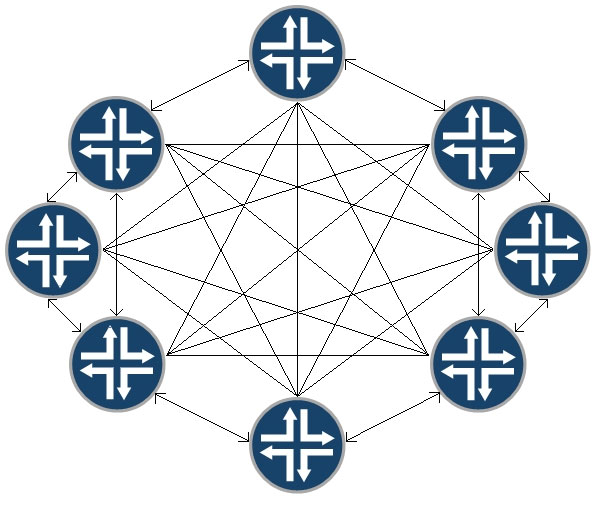
A customer wants to reduce LSP flooding in their IS-IS network.
Which parameter should you change to accomplish this task?

A customer wants to reduce LSP flooding in their IS-IS network.
Which parameter should you change to accomplish this task?
The correct parameter to change in order to reduce LSP flooding in an IS-IS network is the mesh-group parameter. Configuring mesh groups helps reduce the number of redundant link-state PDUs (LSPs) being flooded throughout the network. Each router within a mesh group will receive only a single copy of an LSP instead of one from each neighbor, thus significantly minimizing the flooding overhead. This approach is specifically designed to handle situations where there is a fully meshed topology, as depicted in the image.
Answer D, for Mesh group. CSNP will only be sent on topolgy change and expiration.
what about mesh-groups? https://www.juniper.net/documentation/us/en/software/junos/is-is/topics/concept/isis-mesh-group-understanding.html
I would say mesh groups are invented for a situation like this so D would be my answer.
Mesh group is used for reducing redundant LSP , I say if redundant Is not mentioned B could be right however we do see from the picture that redundant LSPs would be flowing
Correct Answer: D Explanation: When link-state PDUs are being flooded throughout an area, each router within a mesh group receives only a single copy of a link-state PDU instead of receiving one copy from each neighbor, thus minimizing the overhead associated with the flooding of link-state PDUs.
I agree with mikkamilla. Also see https://www.juniper.net/documentation/us/en/software/junos/is-is/topics/example/isis-mesh.html
D mesh group
A mesh group is a set of routing devices that are fully connected. That is, they have a fully meshed topology. Junos OS supports IS-IS mesh groups as documented in RFC 2973, IS-IS Mesh Groups. When link-state PDUs are being flooded throughout an area, each router within a mesh group receives only a single copy of a link-state PDU instead of receiving one copy from each neighbor, thus minimizing the overhead associated with the flooding of link-state PDUs.
https://www.juniper.net/documentation/us/en/software/junos/is-is/topics/concept/isis-csnp-interval-understanding.html La recomendación general es utilizar los valores predeterminados o aumentar el intervalo CSNP si hay son un gran número de circuitos de radiodifusión que necesitan ser suministrados con CSNP nuevos. Aumentar el intervalo puede ayudar a proteger contra Inundaciones de CSNP.
Option D: https://www.juniper.net/documentation/us/en/software/junos/is-is/topics/example/isis-mesh.html After the adjacencies have been up for about 38 minutes, the output shows that Device R1 has received 73 link-state PDUs and sent 37 link-state PDUs. In the same topology in the same amount of time without the mesh group enabled, Device R1 would have received roughly 156 link-state PDUs and sent roughly 117 link-state PDUs. https://www.juniper.net/documentation/us/en/software/junos/is-is/topics/example/isis-mesh.html "After the adjacencies have been up for about 38 minutes, the output shows that Device R1 has received 73 link-state PDUs and sent 37 link-state PDUs. In the same topology in the same amount of time without the mesh group enabled, Device R1 would have received roughly 156 link-state PDUs and sent roughly 117 link-state PDUs."
D is correct, mesh-group